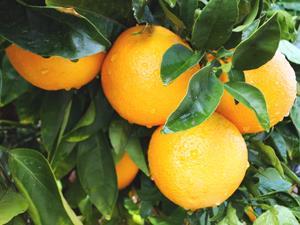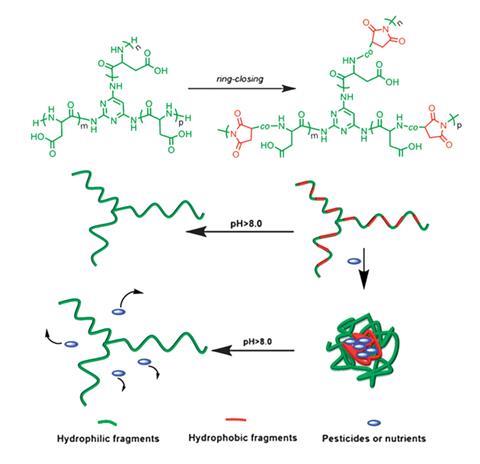Polymeric nanocarriers branch out and bear fruit

US scientists have developed a stimuli-responsive, biodegradable star-shaped copolymer for targeted nutrient and pesticide delivery in plants. Controlled release to the phloem at an elevated pH makes these nanocarriers a promising step forward in modern agriculture.
Polymeric nanocarriers have already been studied for site-specific and controlled drug release in medicine, but their agricultural potential remains relatively unexplored. Existing methods of plant nutrient and pesticide delivery offer low efficiency so a site-specific strategy is in demand.
Brent Sumerlin and his team at the University of Florida have discovered that poly(succinimide) (PSI) offers a solution. At low pH the polymer is hydrophobic and can encapsulate agriculturally active compounds. Following hydrolysis at high pH, the polymer becomes hydrophilic. ‘Our particular interest was in developing polymer nanoparticles that would respond to slightly basic conditions present in the phloem of plants to release their payload,’ explains Sumerlin.
But previous synthetic methods for this polymer offered limited control over its molecular weight, necessary for determining key nanoparticle characteristics, such as size. Sumerlin’s team have overcome this hurdle to yield amphiphilic copolymers with tuneable molecular weights and topologies by combining PSI with poly(aspartic acid). What’s more, their compact star shape offers an easier pathway through the vasculature so they have lower viscosities than their linear equivalents.

Florida’s blossoming citrus industry, with an estimated annual worth of over $9 billion (£5.7 billion), motivated the study. The polymer formulation could treat citrus trees suffering from greening, a bacterial infection in the phloem. Tests using the copolymer to deliver a synthetic plant hormone have so far been successful. Furthermore, toxicity screening of the polymers has proven them safe to use in citrus plants.
Polymer experts are certainly impressed by the work. Robert Mathers, from Penn State University, US, says the targeted delivery system could ‘enhance efficiency and reduce the amounts of pesticides and nutrients required’. And Philip Costanzo, from California Polytechnic State University, US, sees the work as ‘a new direction and research field for polymer chemists in the development of agricultural based materials.’
‘In addition to our specific interest in developing systems for delivery in citrus, we are more generally excited about the prospect of branching out – pun intended – to new areas of research,’ adds Sumerlin.
References
This article is free to access until 29 June 2015. Download it here:












No comments yet